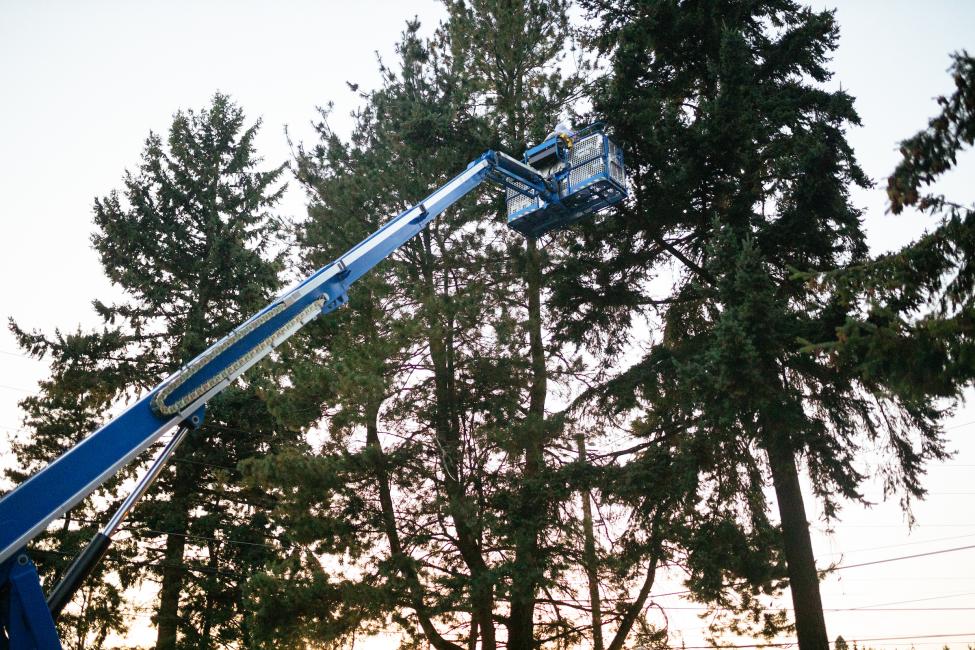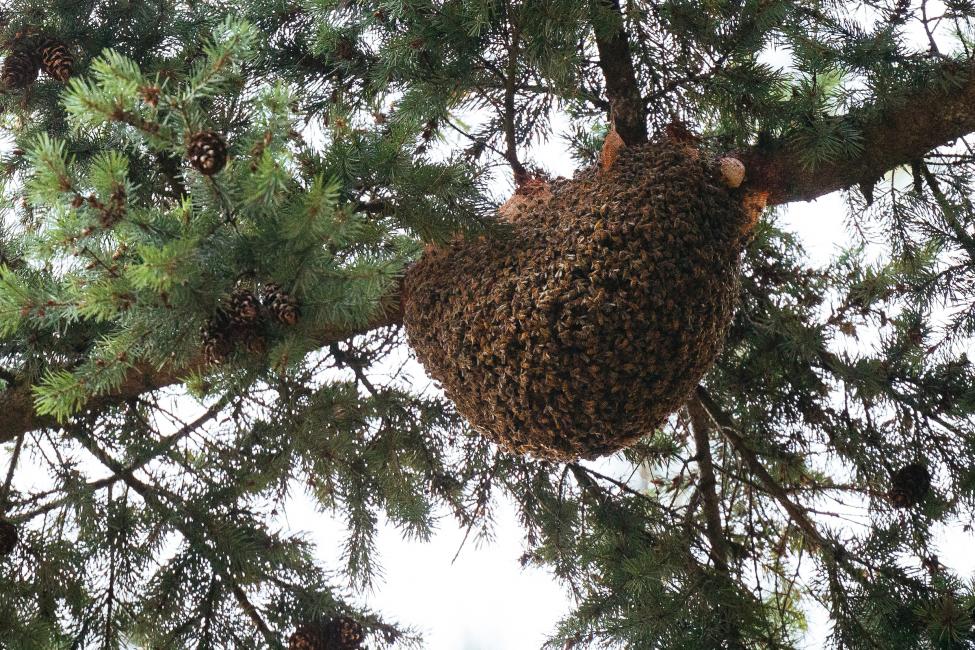To bee or not to bee, that is the question. The answer: save the bees.
When Sound Transit crews found a honey beehive in a tree along the Lynnwood Link Extension alignment, a rescue operation was in order, and we brought in beekeeper Peter Nolte of Rainy Day Bees.
The tree that was home to the bees is set to be cut down to make way for the light rail line, but Nolte said the bees wouldn’t have lived through the winter on an exposed tree branch, especially considering the amount of honey they had.
“This was the only way they could survive,” he said. “We’re giving them the best chance we can.”
Nolte said the hive was relatively small – 10,000 to 20,000 bees, compared to an average of 50,000 to 70,000 bees – meaning that it was a newer colony. He said it's not uncommon for bees to colonize so high in the canopy, but it's the first time he's had access to a lift (thanks to our contractors) to bring them down.
When honeybee colonies want to reproduce, they swarm. Half stay behind to raise a new queen, while the other half leave in search of a new home. Often, this results in a cluster of bees hanging out under a picnic table, in the eaves of a house or on a tree limb.
These are intermediate locations while bee ‘scouts’ continue the search for a permanent home – like a hollow tree trunk, or an old hive that’s not being used anymore. In this case, the bees decided to hunker down and started building comb in the tree branch itself.
Nolte suggested that the hive rescue take place at dusk, when all of the foragers come back from collecting pollen and nectar during the day.
He cut out individual pieces of honeycomb by hand and put them into a frame that will hopefully become their new hive.
Time will tell if the bees, especially the queen, will survive the transfer and adapt to their new surroundings.
Nolte is a member of the Puget Sound Beekeepers Association, and he sells honey and pollen (which is rich in B vitamins - really) at local farmers markets. He has been interested in social insects since he was a kid.
A visit to the Puyallup Fair sparked the interest in beekeeping.
He also said he had done theater in college (“where they put us on all kinds of teetering ladders”) so going up in the lift wasn’t too uncomfortable, though he had never been up that high while beekeeping before. Usually, swarms are on the ground, or can be reached with a 20-foot pole.
There are many threats to the bee population in the U.S., from habitat degradation to incorrect use of pesticides to invasive species. But Nolte said honey bees are “a complete necessity” for agriculture, especially here in Washington where they pollinate our apple orchards and berry fields.
Construction on the Lynnwood Link Extension is continuing as we move toward a 2024 opening.
Check out this previous Platform post for more on the tree removal process.



